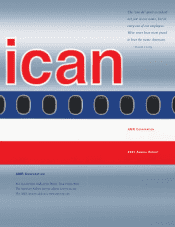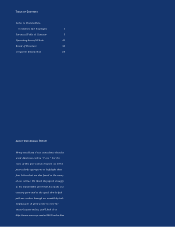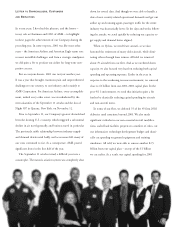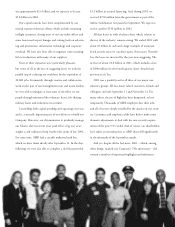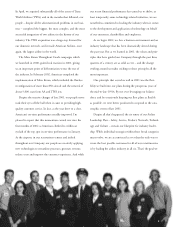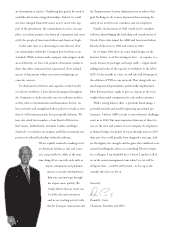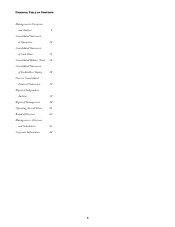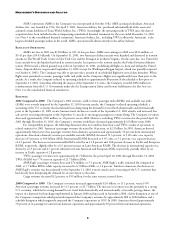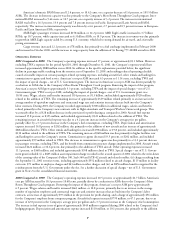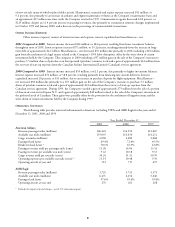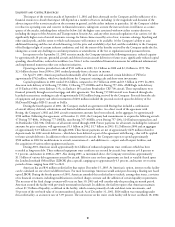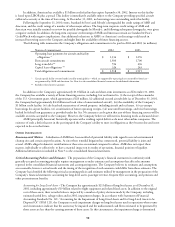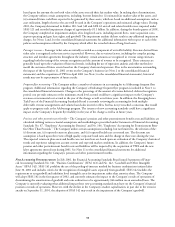American Airlines 2001 Annual Report Download - page 3
Download and view the complete annual report
Please find page 3 of the 2001 American Airlines annual report below. You can navigate through the pages in the report by either clicking on the pages listed below, or by using the keyword search tool below to find specific information within the annual report.
LETTER TO SHAREHOLDERS, CUSTOMERS
AND EMPLOYEES
In recent years, I have had the pleasure, and the honor –
in my role as Chairman and CEO of AMR – to highlight
in these pages the achievements of our Company during the
preceding year. In some respects, 2001 was like most other
years – the American Airlines and American Eagle teams rose
to meet incredible challenges, and from a strategic standpoint,
we did quite a bit to position our airline for long-term com-
petitive success.
But as everyone knows, 2001 was not just another year.
It was a year that brought enormous pain and unprecedented
challenges to our country, to our industry and certainly to
AMR Corporation. For American Airlines, every accomplish-
ment, indeed every other event, was overshadowed by the
twin calamities of the September 11 attacks and the loss of
Flight 587 in Queens, New York, on November 12.
Prior to September 11, our Company’s greatest obstacle had
been the slowing U.S. economy, which triggered a substantial
decline in air travel generally, and business travel in particular.
The previously stable relationship between industry supply
and demand deteriorated badly, and as revenues fell, many of
our costs continued to rise. As a consequence, AMR posted
significant losses in the first half of the year.
The September 11 attacks turned a difficult year into a
catastrophe. The nation’s aviation system was completely shut
down for several days. And though we were able to handle a
slew of new security-related operational demands and get our
airline up and running again, passenger traffic for the entire
industry was dramatically lower. In the days and weeks follow-
ing the attacks, we acted quickly by reducing our capacity to
get supply and demand better aligned.
When we fly less, we need fewer aircraft, so we also
hastened the retirement of many older aircraft, while elimi-
nating others through lease returns. All told, we removed
about 70 aircraft from our fleet. And as we ratcheted down
capacity, we also focused very hard on reducing both capital
spending and operating expenses. Earlier in the year, in
response to the weakening revenue environment, we removed
close to $1 billion from our 2001-2002 capital plan. In the
post-9/11 environment, we took that initiative quite a bit
further by drastically reducing capital spending for aircraft
and non-aircraft items.
In terms of our fleet, we deferred 35 of the 45 firm 2002
deliveries until sometime beyond 2003. We also made
significant cutbacks in our non-essential aircraft modifica-
tions, scaled back facilities projects in a number of cities, cut
our information technology development budget and drasti-
cally cut spending on ground equipment and training
simulators. All told, we were able to remove another $2.5
billion from our capital plan – on top of the $1 billion
we cut earlier. As a result, our capital spending for 2001
1

